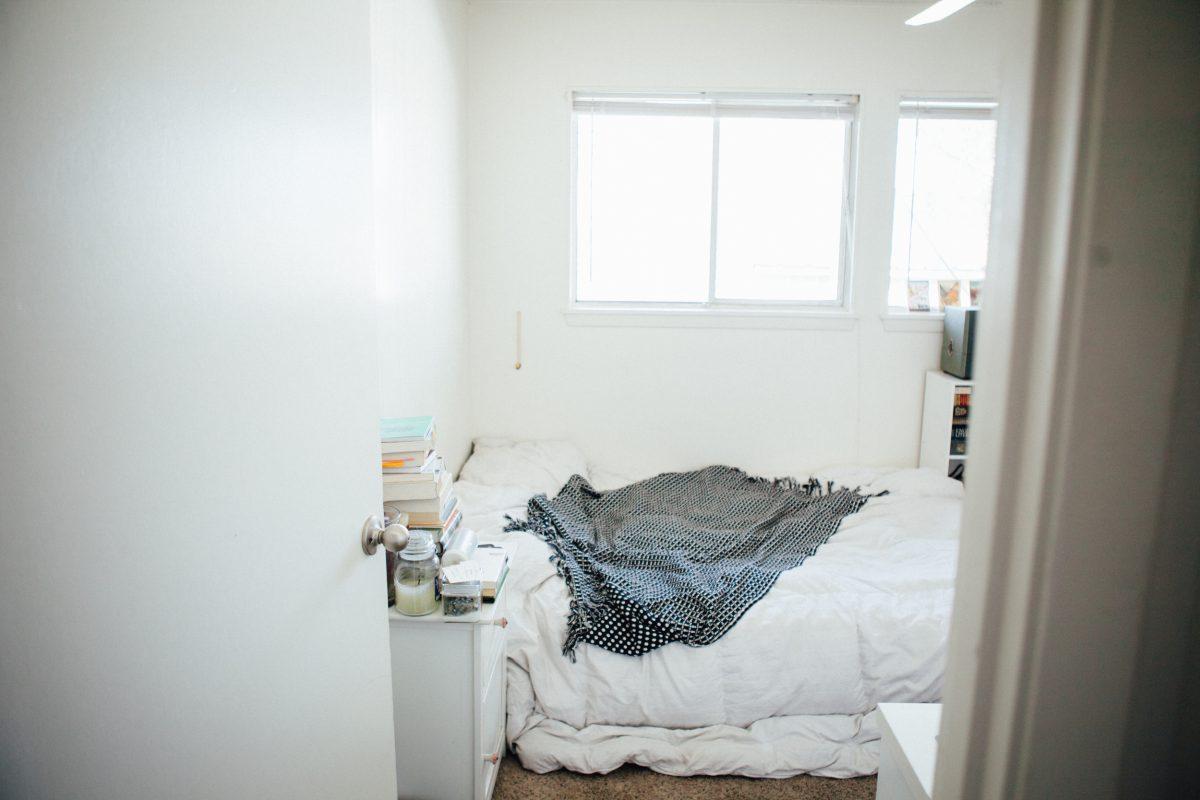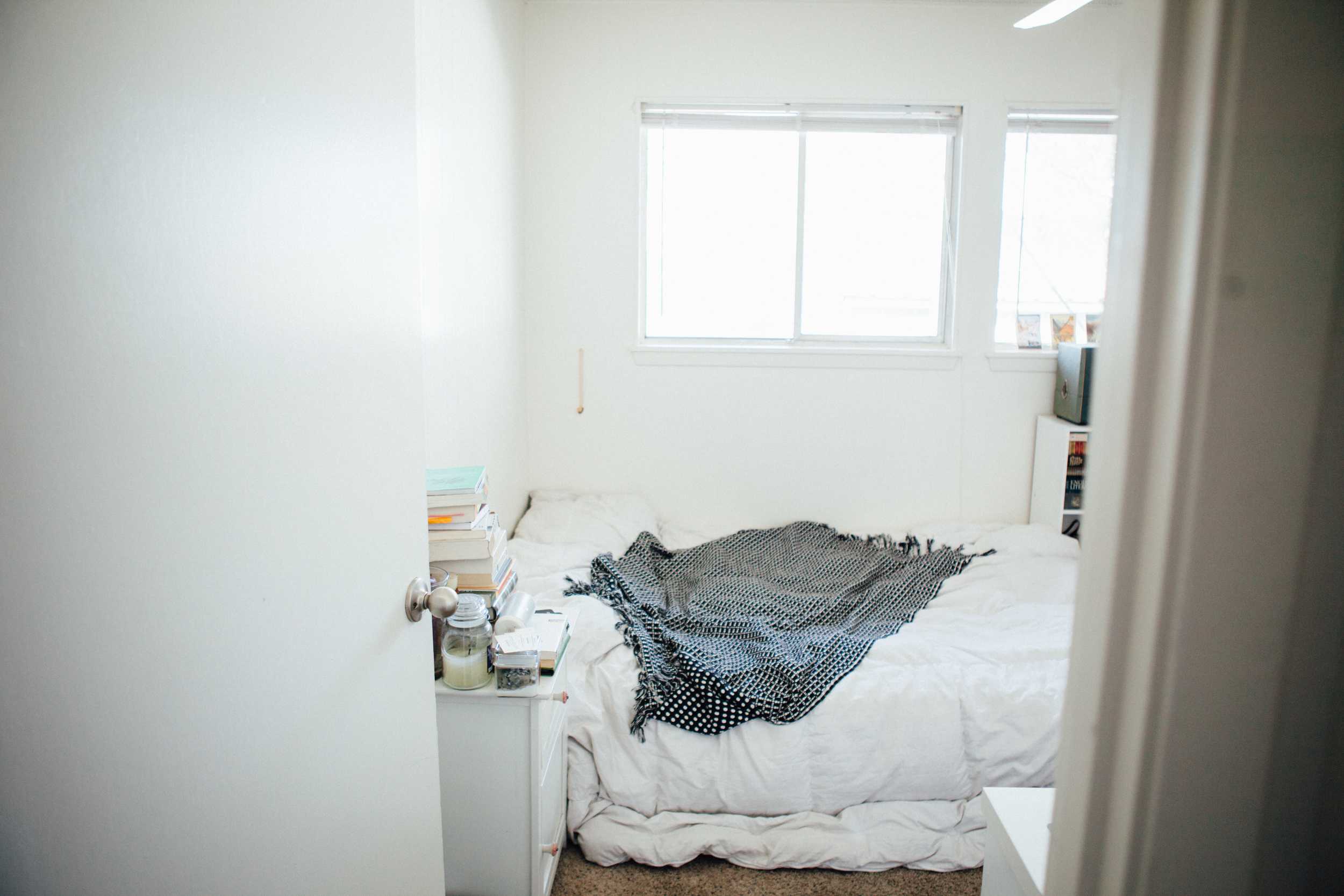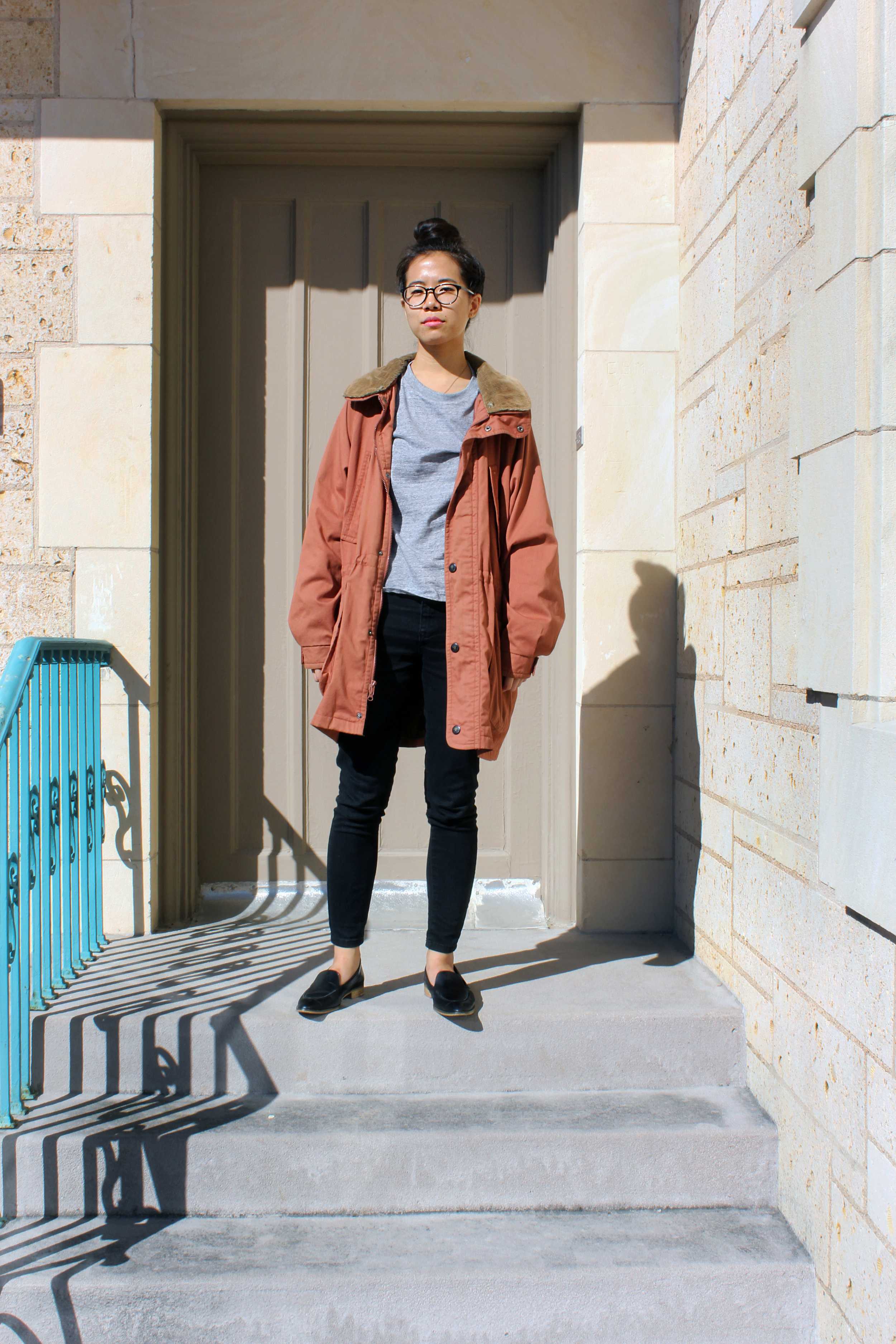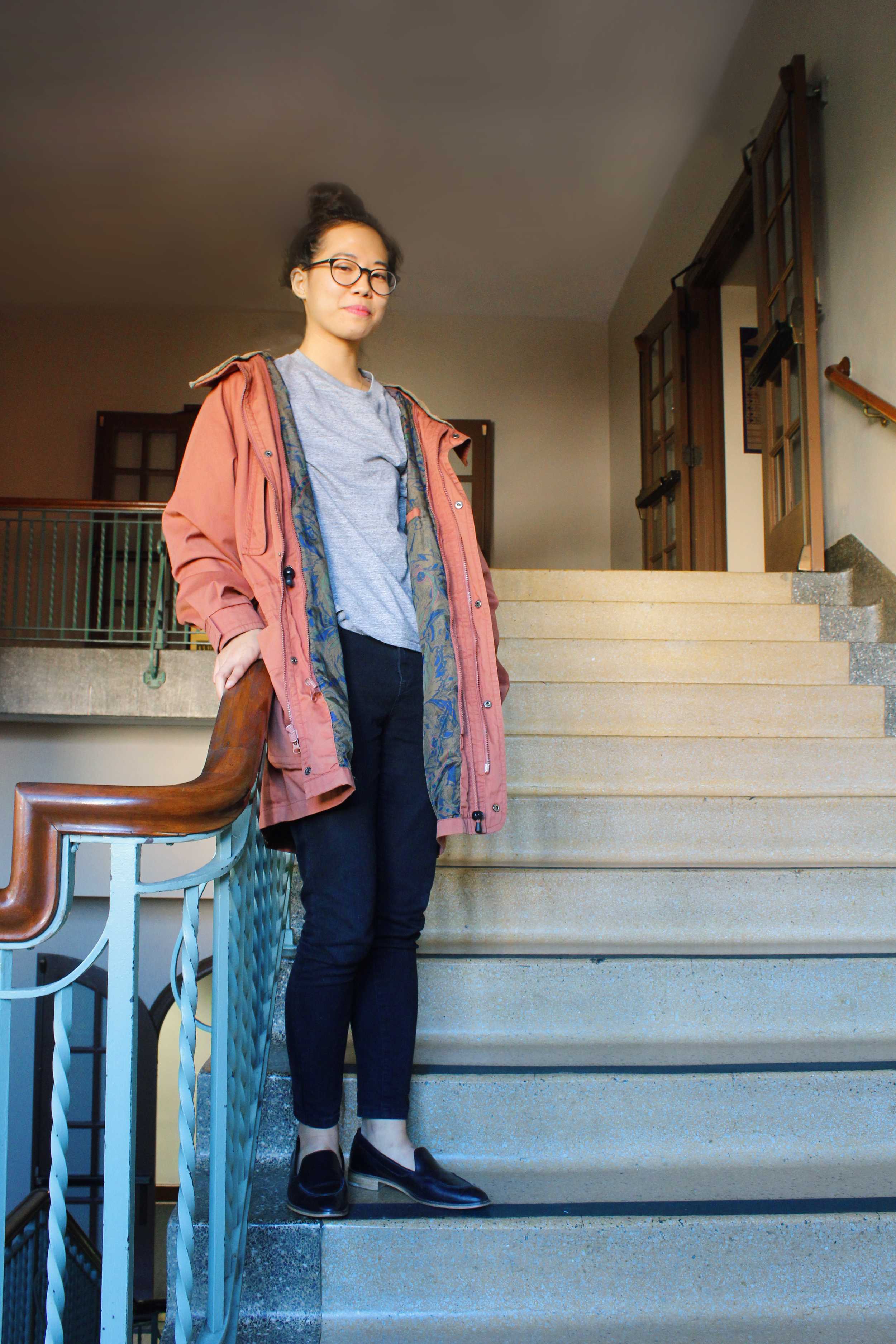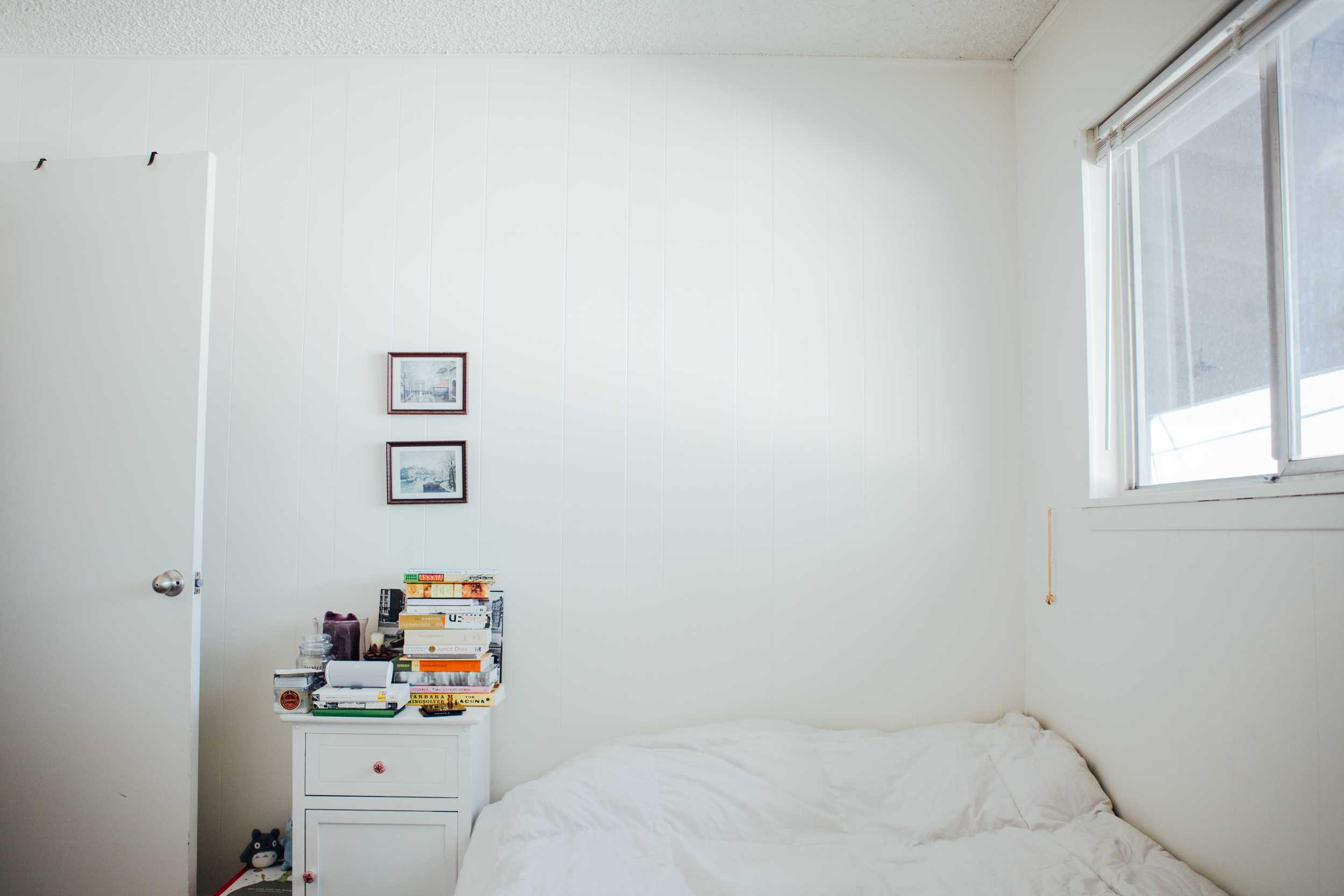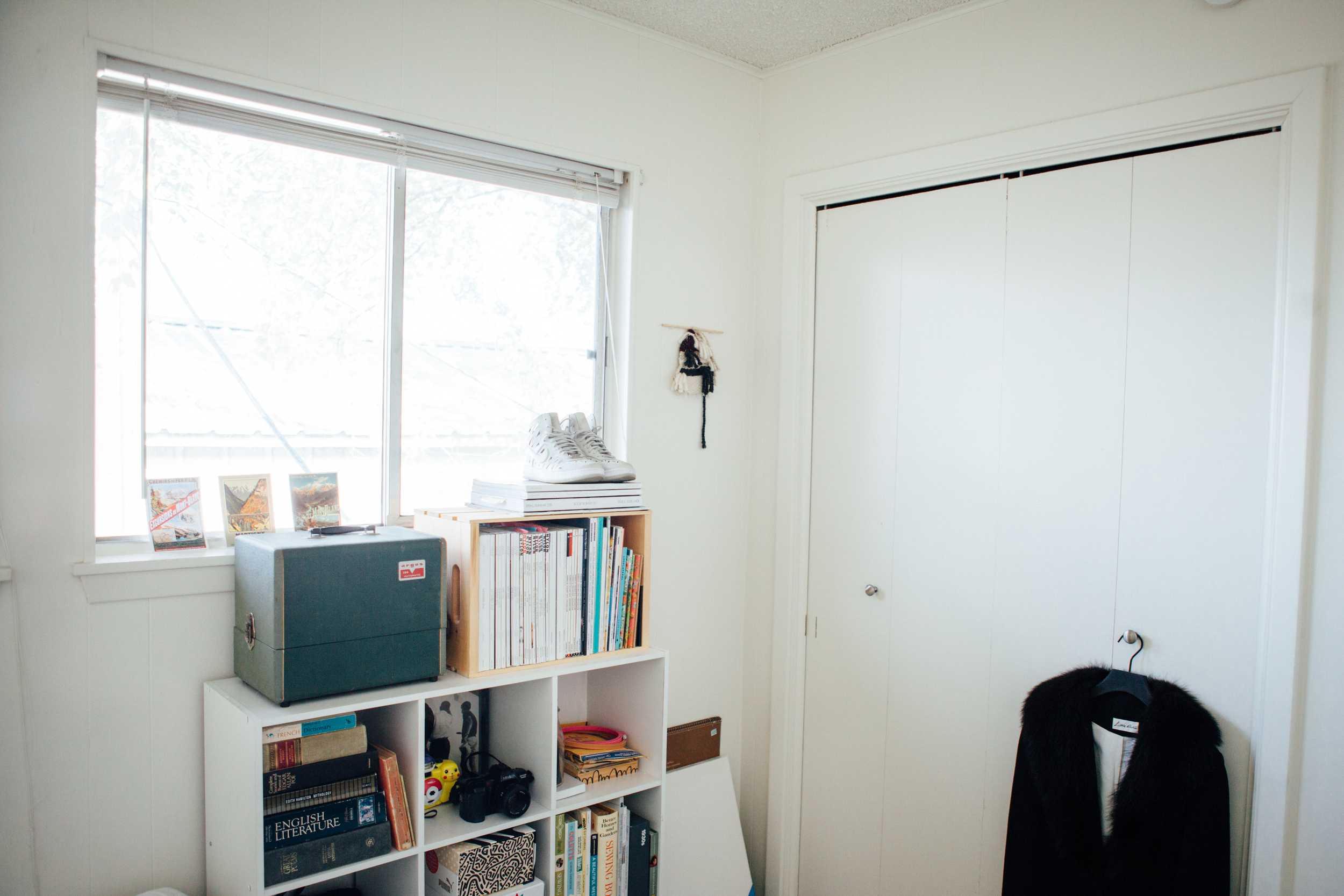Living on your own in the high-stress environment of college is hard. The pressure of tests, essays and living with roommates create a perfect recipe for activities like stress shopping, which can lead to an unnecessary amount of clutter in your life. If it seems like your closet is full to the brim, or you can’t remember the last time you walked through your apartment without banging your shin on a piece of furniture, maybe it’s time to rethink the way you spend. Impulse buys create stuffy living spaces as well as a psychological clutter of the mind, making it hard to relax after a long day.
By Mae Hamilton
Photos by Paula Horstman and Sarah Montgomery
You can create a less stressful living space with a unique aesthetic by getting rid of a few things and practicing conscious shopping. Incorporating minimalism into your daily routine does not mean starving yourself of material goods like clothes, furniture or a car. Rather, modern takes on minimalistic style revolve around being more conscious of the purchases we make and the things we already have in our lives.
Don’t let your clutter clog your life. Train your brain to refuse those spontaneous Target runs and save some money — and your sanity — by leading a more minimalistic life.
Your Closet
Minimalism does not have to mean wearing the same boring black trousers and white linen blouse every day. Minimalism can be colorful in a monochromatic way, focused on the shape of clothing or even include simple, clean patterns with bold lines. You set the rules. Baggy T-shirt dress not required (unless you want to wear them).
Although it’s fun to play around with different aesthetics, it’s not cost efficient to try a health goth look (think Marilyn Manson wearing a Nike tracksuit) one week and a bohemian look the next. Trends can be fun, but they fade quickly and you’ll soon find yourself with outdated clothing. Instead, focus on buying basic pieces like T-shirts and tanks, which can be layered with cardigans and jackets.
Next, choose a color palette. Not everyone looks good in the same colors, so keep in mind colors that will compliment your skin tone, hair and eyes. Selecting a set of about four to five colors can curb impulses to buy clothes based on seasonal colors that will go out of style in four to six months. Being mindful of that color palette is the key to maintaining a minimalistic wardrobe that lasts season to season. Not only will your clothes always match each other, but you can confidently walk into a store and know which racks to skip and which to spend more time browsing. It will be much easier to mix and match clothes and play with shapes and patterns.
When buying a new addition to your simplistic wardrobe, ask yourself what you could wear it with. Is this new piece going to mix and match well with other clothes you have in your closet? If the answer is yes, consider buying. If it doesn’t seem like a versatile piece that can be worn season to season, skip it. If it’s a quirky focus piece or doesn’t fit well, chances are it will end up in the back of the closet gathering dust and taking up valuable space. Not only will skipping over impulse buys keep your closet hassle-free for mornings when you are rushing out the door, but will leave you with more space and less clutter. Minimalism is all about versatility.
Your Apartment
Minimalism is about more than clothes, and many times clutter extends well past the doors of your closet. To achieve a truly simple life, living spaces must be considered as well. The design of a living space shapes your thinking as well as the energy of the space. Clutter creates anxiety, while open spaces foster more room for free, creative thinking and personal growth. If you find yourself dreading going home to your cluttered apartment, consider the following:
Just like clothing, settle on a clean style for your apartment, keeping it in mind when buying furniture. Stick with a narrowly focused color palette. Buying your furniture in sets isn’t necessary, but be mindful of how the styles and colors will work together before bringing new pieces into your life.
While everything is bigger in Texas, big, bulky furniture is not necessarily better for student living spaces. Rather than getting large furniture with single use purposes, choose things that fit the room well and have a second use. For example, buy a bed with bottom storage or make use of the gaping space under the bed. Versatility is vital in small living spaces and on a college budget your space is likely limited.
For a nice touch that creates a great minimalistic look in any apartment, consider getting a few low-cost, low maintenance plants. Plants like rosemary, mint and oregano not only look and smell good, but can also be used for cooking. Aloe vera plants are low maintenance, help improve the air quality of your apartment and can help heal cuts and burns all at a low price. If you want to add a little something extra to your apartment, create DIY hanging plant holders or use old candle jars for planting succulents.
Although it might be difficult at first to adjust to a minimalist lifestyle, in the long run minimalism saves time and money while creating a cohesive aesthetic unique to you. While at first your apartment and closet may seem bare and empty, consider filling this space with immaterial things like time spent with family and friends. You may find that by focusing less on “things” and more on the moments in life that can’t be bought, you will be happier than when indulging in another shopping binge of mental and monetary distress.
Just like with people, it’s important to be mindful of the material things you bring into your life.































